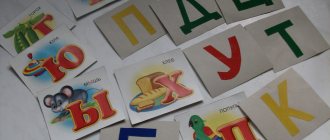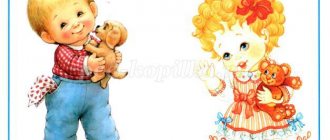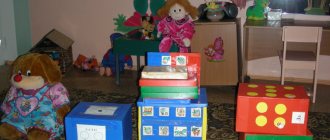Sounds of the Russian language
Our speech consists of words that are combined into a sentence. Each word can be considered as a semantic component of a sentence, filled with content, and also as a sounding object.
A word can be divided into syllables, which are made up of individual sounds. From a phonetic point of view, a word is made up of sounds.
Sound is the basic unit of language, just like words and sentences. Sounds form words at the phonetic level. Sounds, depending on their set, quantity, and location in a certain sequence, help to distinguish one word from another:
- treasure - contribution;
- crown - crown;
- cat - current.
Depending on how sounds are formed in the speech apparatus, vowels and consonants are distinguished in the Russian language.
The vowel sounds [a], [o], [e], [u], [i], [s] consist entirely of voice. When they are formed, air passes freely through the tense vocal cords and mouth, without encountering any obstacles on its way. In Russian, vowel sounds are musical. You can drag them out for a long time and sing: a-a-a, o-o-o, o-o-o.
Vowel sounds form a phonetic syllable in a word, but consonants cannot form it. When syllabled, they are combined with vowel sounds in pairs or whole groups:
- collar - collar;
- beauty - beauty.
Consonants
Consonant sounds constitute a larger group of the phonetic structure of the Russian language. There are 36 of them. Compared to vowels, consonant sounds have a different quality. They are pronounced muffledly and are formed with little participation of the voice, which is necessarily accompanied by noise. Noise occurs if, when pronouncing a consonant sound, a stream of air encounters an obstacle in the form of a raised tongue, rubs against the walls of the cheeks, as a result of closing and opening the lips, etc.
Definition
Consonants are sounds that are formed by noise.
According to the degree of participation of voice and noise, consonant sounds are divided into sonorant and noisy .
Sonorant sounds are sounds in which noise is minimal and the voice predominates.
Let's list the sonorant sounds:
[th'], [l], [l'], [m], [m'], [n], [n'], [r], [r'].
According to the relationship between voice and noise, noisy consonants are also divided into two groups:
- voiced consonants;
- voiceless consonants.
Voiced consonants
Compared to sonorants, in voiced consonants, during their formation, noise prevails over voice. In Russian, the following sounds are voiced:
[b], [b'], [c], [c'], [d], [g'], [d], [d'], [g], [h], [z'].
They are paired based on hardness and softness:
- [b] - [b']
- [in] - [in']
- [g] - [g']
- [d] - [d']
- [z] - [z'].
Only the voiced consonant [zh] is always hard and has no pair for softness:
- millstone [z o r n o f]
- lived [lived].
Paired by voicedness/voicelessness
There are 21 consonant letters in the alphabet, which represent 37 consonant sounds.
Many consonant sounds form voiced/voiceless pairs. Such consonant sounds can be voiced or devoiced depending on their position in words.
All voiced consonant sounds consist of noise and voice, all voiceless consonant sounds consist only of noise.
Let's list paired consonant sounds by voicedness/voicelessness using the table “Voiceless/voiced consonant sounds”:
| Voiced consonants | Voiceless consonants |
| [b] | [P] |
| [V] | [f] |
| [G] | [To] |
| [d] | [T] |
| [h] | [With] |
| [and] | [w] |
The correct spelling of paired consonants based on voicedness/voicelessness is an orthogram that requires a test word.
Let us give examples: the word “tooth” is pronounced with a dull consonant sound [p] like [zup]; the word “teeth” is pronounced with a voiced consonant sound [b] like [teeth].
Unpaired voiced
In the Russian language there are only voiced consonant sounds, that is, such consonant sounds are not paired, they do not have pairs of sounds due to deafness.
The sound of unpaired voiced consonants does not depend on position.
Unpaired voiced consonant sounds include: [l], [m], [n], [r], [th].
Let's give an example: the word “crowbar” is pronounced with unpaired voiced consonant sounds [l] and [m] like [crowbar].
Unpaired deaf
There are also consonant sounds that do not have a voicing pair. Such sounds are called unpaired voiceless consonants.
The sound of unpaired voiceless consonants does not depend on position.
Unpaired voiceless consonants include: [x], [ts], [h], [sch].
Let's give an example: the word “thicket” is pronounced with unpaired voiceless consonant sounds [h] and [sch] as [ch'ash'a].
Let's take on the consonants
How to teach a preschooler to distinguish between voiced and voiceless consonants? Simply forcing him to learn them by heart (that is, memorize them) is the wrong move. Indeed, with this approach it will be very difficult for him to apply this knowledge in practice. This means that he needs to make sure that he understands the difference between them, learns to hear them, and identifies them by specific signs.
As you know, information is remembered much easier if, when studying it, a person uses different senses: vision, hearing, touch... It is necessary to explain to the child that consonants in the Russian language are divided into voiced and voiceless, depending on whether the voice is involved in their pronunciation. To make this easier to understand, let’s connect the sense of touch: let the child put his palm to his throat and pronounce any voiced sound, and then a voiceless sound (for example, D and X). The voiced one creates a vibration of the vocal cords, which the palm will feel, but the voiceless one does not.
You can distinguish them by ear. If you cover your ears with your palms and then pronounce a sound in a low voice, then sonority can be determined by the sound, and deafness - by noise. Be sure to pronounce them with your voice, and not in a whisper, otherwise most of the sounds will be deaf! After playing this way, the child will understand the difference.
Differentiation of paired voiced-voiceless consonants
Difficulties in differentiating phonemes that have acoustic-articulatory similarities in younger schoolchildren lead to confusion of letters in written speech. Confusion indicates that the writer identified a certain sound in the word, but chose the wrong letter to represent it. Based on acoustic-articulatory similarity, paired voiced-voiceless consonants are often mixed: b-p, v-f, d-t, z-s, g-k, sh-zh. The peculiarities of the pronunciation of the sounds of these pairs are in the same articulatory patterns.
In this case, voiced consonants are pronounced with greater participation of the voice than voiceless ones. In the flow of speech, especially when pronouncing words in a whisper, when students dictate to themselves, the differences between these sounds are “blurred.” The child is guided by articulation, and the insufficiency of phonemic representations and differentiations, characteristic of children with speech impairments, is decisive in the occurrence of this type of specific errors. Mixtures are observed in a clear position: “tender”, “kartovel”, “shuravel”, “rough”, “troubled”, “worked hard”. Errors are persistent.
In order for correctional work to be effective, it is necessary to comply with the following general didactic requirements and principles of correctional speech therapy: consistency, phased formation of mental actions, systematicity, reliance on different analyzers, and an integrated approach. Let's consider the system of correctional work using the example of paired consonants s-z:
1. We select sounds from words in the initial position using subject pictures.
2. We clarify the articulation and sound of the mixed sounds. At the same time, we rely on visual, auditory, and kinesthetic analyzers. We correlate sounds and letters using mnemonic techniques. This is especially important for first-graders, who experience instability in correlating phonemes with graphemes, and the connection between the meaning and visual image of a letter has not been strengthened. For example, the sound “Z” is the song of a mosquito. When pronouncing a sound, place your palm on your throat and feel the vibration of the vocal cords.
The sound “C” means the pump is running. Vibration of the vocal cords is almost not felt. The sound can be pronounced in a whisper.
To consolidate the visual image of the letter, you can use “The ABC of Merry Men” by A. Shibaev or the manual by E.V. Ostanina “I will remember the letters myself from pictures and poems”
3. Differentiate sounds and letters in syllables. Types of tasks:
- Read syllables according to syllable tables in pairs, selectively (only with the letter s, z)
| SA - FOR SO - ZO SU - ZU SY - ZY SI - ZI SE - ZE SIO - ZO XIA - ZYA | SLA - EVIL SLO - EVIL SLU - EVIL SLY - EVIL SLI - EVIL SLE - EVIL SLY - EVIL SLY - EVIL | SVA - CALL SVO - CALL SVU - CALL SVY - CALL SVI - CALL SVE - CALL SVE - CALL SVYA - CALL |
- Show (write) the first syllable in the words: teeth, soups, north, zebra, hare, sled, hear, evil, beets, stars, etc.
- Show (write down) the last syllable of the words: carry, carry, frost, scales, benefit, dew, etc.
- Show (write down) the second syllable of the words: they threw, cut, mowed, drove, called, sent, kid, donkey, etc.
- Come up with a word that begins with the given syllable.
4. Differentiate sounds in words. Types of tasks:
- Read and write the words, inserting the missing letters S, Z.
- Read and write down the words, adding the appropriate syllables: SA-ZA: va__, gla__, Li__, li__, mimo__, o__, flask__, miracle__, next__, gro__, pol__, polo__.
- Replace the underlined letter with S or Z, getting a new word:
house branch very T-shirt smooth bark washing desk labial Borka blouse to steal - Complete syllable patterns of words indicating the letters S, Z: drifts, sparkled, smeared, through, green, gold, pine, stepped, strawberry, etc.
- Distribute pictures (words) in two columns according to the presence of sounds S, Z.
- Puzzles. Write down the answers, make a syllable diagram or encrypt them, indicating the serial numbers of the letters S, Z
a) Not caring about the weather, she walks around in a white sundress, and on one of the warm days May gives her earrings (Birch) - Z5
b) Gold coins fall from a branch (Autumn Leaves) – C2 C3 Why then is he considered a bird? (Ostrich) – С1С6
c) Striped horses play hide and seek all day long. (Zebras) – Z1
- Working with pairs of words in which the sounds and letters S, Z are semantic distinguishers:
a) read, choose the corresponding picture for each word (rose-dew, goat-braid)
b) insert the letter in the context: prickly ro_a, cold ro_a; _pouring water, _pouring the dog.
c) Finish the sentence with a word from the pair: Mows the grass..., plucks the grass... (scythe, goat)
d) Make up a sentence with each word of the pair.
Webinars on tax planning using offshore companies wugroup.ru.
5. Differentiate sounds and letters in phrases and sentences.
- Insert the letters c, z into words, phrases, sentences (proverbs):
| Not the gold that bleeds. | Take little for every task. |
- Make up phrases:
- Make up phrases using words from brackets:
| a) blue..., blue..., blue... | (sky, umbrella, bag) |
| b) winter..., winter..., winter... | (forest, coat, clothes) |
- Insert letters into phrases. In which words do the consonants require checking?
| a) interesting | _ka_ka | b) _ close | eyes_ki |
| _ Elenaya | kra_ka | _ no | ma_ku |
| ru _ _ kaya | take_ka | ve_ti | Kolya_ku |
- Insert the missing words into the sentences - the names of the pictures:
The children made... The older sister went to... On... Zoya forgot her scarf.
- Find errors in the sentences:
On the branches of a birch tree we noticed a nest of bullfinches. The dragonfly daisy has golden eyes.
- Make sentences from the words:
a) Sonya knows a lot of fairy tales, interesting ones; b) feeders, children, hang, trees, on;
6. Differentiate sounds and letters in texts.
- Write down the text, inserting the missing words with the letters S, Z into the sentences.
It's cold... Snow covered the ground white... (what?). Aspen and (what?) ... put on ... (what?) fur coats. Tall... (what?) grew at the porch. Snow... (what does it do?) in the sun with bright sparkles. Frost (what did?) glass... (what?) patterns. The kids are running... (with what?) up the hill.
Words for reference: tablecloth, birch trees, snowdrifts, sleds, snowy, high, shines, sparkles, sparkles, painted, decorated, fabulous, intricate.
- Statement of issues and plan.
1 CLASS
Tuzik. Vasya has a dog Tuzik. Tuzik is sitting by the fence. Vasya gives him bones. Tuzik is gnawing on bones.
| 1) What is the name of Vasya’s dog? 2) Where does Tuzik sit? | 3) What does Vasya give him? 4) What is Tuzik doing? |
Birch. There is a tall birch tree in the garden. There is a finch's nest on a birch tree. He carried leaves into the nest. The finch sings loudly.
| 1) What kind of birch tree is in the garden? 2) Whose nest is on the birch tree? | 3) What did the finch carry into the nest? 4) How does a finch sing? |
2nd CLASS
Brave Drozd. The cat Vaska strayed from the house. He began to look for his own food. Once the cat noticed a thrush's nest. Vaska’s eyes sparkled. He climbed right up to the hollow and put his paw in. Drozd rushed at Vaska. He began to peck him on the nose and eyes. The cat got scared and started running.
| 1) Who strayed from the house? 2) How did the cat feed? 3) What did Vaska notice? 4) How did he behave? | 5) What did the blackbird do? 6) How did the thrush defend the nest? 7) What did the cat do? |
Gourmand. The Marquise cat was very strange. She loved sweet honey. Once the Marquise was basking in the sun. Then she smelled a familiar smell. The cat opened her green eyes and moved towards her cherished goal. In front of the hive, Marquise stood on her hind legs. She stuck her sweet little face into the hive. And suddenly there was a loud cat squeal. The marquise rushed into the bushes.
Plan. 1. Strange cat. 2. Familiar smell. 3. Left without honey.
Author of the material: Tsarevskaya Elena Gennadievna
Also on topic:
Presentation “Differentiation of paired consonants in words”
Let's sort out the pairs
To make it easier to remember paired and unpaired deaf and voiced sounds, we connect vision. Let's visualize pairs of consonants in table form.
For this purpose, you can compose a phonemic tale about how vowels and consonants lived in the Russian language, some consonants had siblings, while others did not. We draw two icons on the left side of the sheet that will indicate voicedness and deafness (for example, a bell and headphones). Opposite the bell we write the ringing ones, opposite the headphones – their deaf brothers. Count together how many pairs of brothers are there in our language? That's right, 6. Let the child visually see which letters are paired.
Sometimes brothers change places in words. For example, a paired voiced voice at the end of a word becomes voiceless (tooth, shore, train), and paired voiced voices before other voiced ones become voiced (backpack, request).
But there are consonants that do not have brothers. They do not turn into anyone and therefore are friends only with “their own”. Now in the table we add unpaired voiced ones above the voiced ones, and unpaired voiceless ones under the voiceless ones. With such visual perception, it will be easier for the child to remember the rule: M, L, N, R, Y - only voiced ones, X, C, Ch, Shch - only deaf ones.




